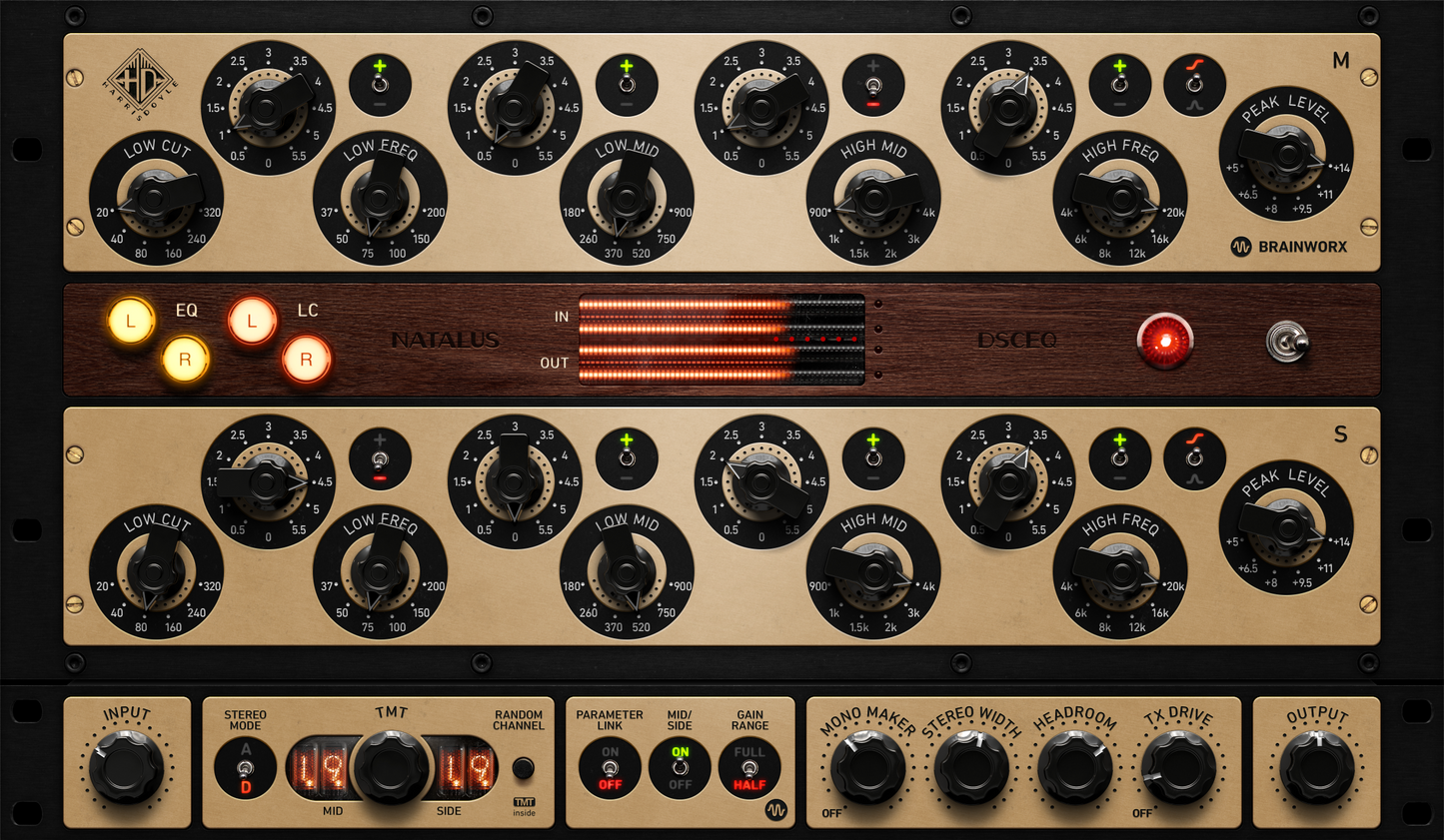This plugin is included in CORE and PRO subscriptions! Learn more
Natalus DSCEQ
Fatten audio with magnetic tape-style saturation
The Natalus Dynamic Stereo Console Equalizer (DSCEQ) is more than just a gorgeous-sounding passive equalizer. Its unique “Peak Level” control fattens audio while preserving dynamics. It does this by adding magnetically controlled dynamics processing to your signal—similar to the kinds of gentle compression and saturation you’d find in a well-calibrated tape machine.
Smooth transients like never before
Although it’s designed first and foremost as an EQ, a favorite feature for many users is the Natalus’ incredibly simple, one-knob dynamics section. As you turn up the Peak Level control, a magnetic transformer reduces the intensity of transient peaks in a way that is much smoother, cleaner, and more analog-sounding than any conventional compressor or limiter. Use it to tame “spiky” top end on acoustic guitars, synths, and percussion. Apply the Natalus DSCEQ to kicks and snares for a satisfying tape-like “punch.”
Crank the knobs to apply musical tone shaping
The beauty of passive EQs like the DSCEQ is their ability to help you significantly reshape your sounds without making them feel overly processed or “EQ’d.” Don’t be afraid to turn these knobs further than you think they ought to go. Each knob “goes to 11” for good reason: Dramatic moves can yield musical-sounding results thanks to the Natauls’ wide bandwidths, complimentary EQ curves, and single analog makeup gain stage. Think of it like a Pultec with a potentially cleaner, smoother sound—and with even more flexible and user-friendly control.
A perfect emulation of the analog original, with added features
The engineers at Brainworx painstakingly modeled the original Natalus hardware design by Rod Harris and Govinda Doyle to recreate every nuance of the original’s performance. But they did more than that, adding proprietary plugin-only features like TMT, Auto Listen, Mono Maker, Stereo Width control, M/S processing, and more.
Features
- Exacting emulation of the unique Harris Doyle Natalus Dynamic Stereo Console EQ
- 4 bands of passive EQ with a low cut filter and overlapping frequency control
- Proprietary “Peak Level” circuit responds to transients magnetically, similar to a tape machine, keeping transients in check and producing a beautiful "bloom" effect
- An intuitive interface that lets users focus on creativity—not technical EQ settings
- Brainworx Plugin Only Features
- TX Drive - the "Headroom" parameter for the transformer model only. Brainworx' innovation
- Brainworx´ TMT inside: Tolerance Modeling Technology (TMT, US Patent No. 10,725,727) simulates channel-to-channel variances in electronic components for the most realistic analog sound in the box
- Mono Maker: Sums low-frequency content to mono, giving you a focused, punchy bass response
- Stereo Width: To expand the stereo width of your tracks
- A separate Mono Version for using the plugin on individual tracks such Bass Drum, Snare, Bass, Vocals, and more
- Scalable User Interface
- Artist Presets
Sound Examples
Product Information
Specifications
AAX AudioSuite, AAX Native, AU, VST2, VST3
Downloads
With the Installation Manager you can select, download & install all the Plugin Alliance products. Select any and all formats you need for your system! Mac & PC.

